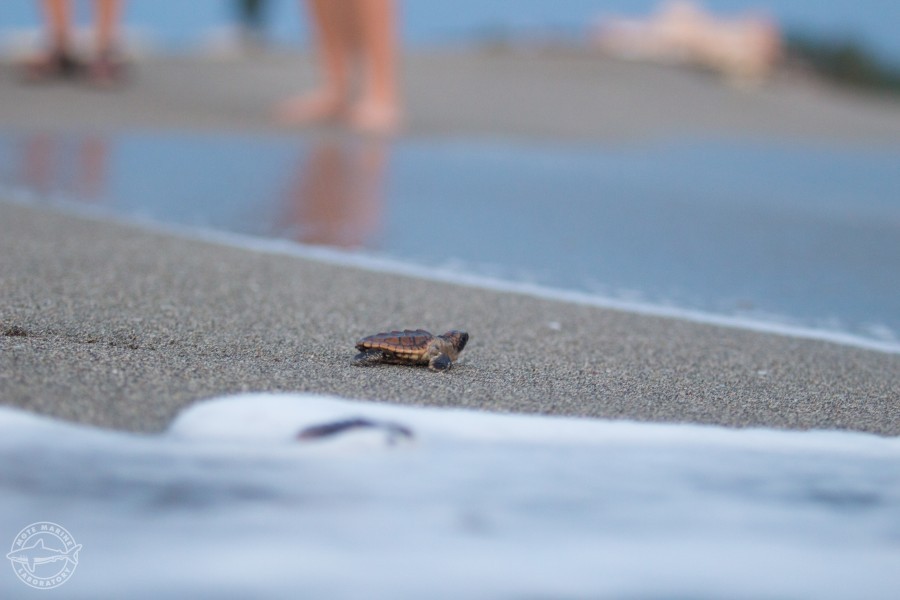Mote responds to first sea turtle hatchlings of 2017
On Saturday, June 17, 2017, Mote Marine Laboratory's sea turtle hatchling hospital was notified that a loggerhead turtle nest had been disturbed by wildlife on Manasota beach.
On the beach, permitted volunteers with Coastal Wildlife Club gathered the recently disturbed turtles and transported them to Mote’s hatchling hospital for care and observation. Within 24 hours, all 51 hatchlings were deemed healthy and could be returned to the beach in the evening and made their way into the surf.
Every hatchling that comes through Mote’s hatchling hospital is given a thorough health assessment for any injuries and is weighed and measured. Commonly, hatchlings are brought to Mote after being disoriented by artificial lights visible from beaches, having their nests dug up early by predators or being found during routine nest excavations after hatch. Mote’s hatchling hospital can receive 1,000 to 2,600 patients each year.
“The 2017 nesting season is already above average and we hope this year will result in a healthy number of hatchlings making it safely to the ocean,” West said. “Only 1 out of 1,000 hatchlings will grow to reach maturity so every one we can help return to the wild is important."
This is the 36th year that Mote’s Sea Turtle Conservation and Research Program has patrolled and monitored nesting on beaches from Longboat Key to Venice, Florida. Mote’s Sea Turtle Patrol consists of scientists, interns and more than 300 volunteers – including some who have been with the program more than 21 years.
At the time of this release, Mote has documented more than 2,000 nests from loggerheads, the most common species in Southwest Florida. The rarest species on local nesting beaches are Kemp’s ridley turtles.
Below are turtle-friendly tips for beachgoers during nesting season, May 1 – Oct. 31 in southwest Florida:
- Shield or turn off outdoor lights that are visible from the beach.
- Close drapes after dark and remove furniture from the beach or stack it vertically close to the dune line.
- Fill in holes that may entrap hatchlings on their way to the water.
- If you see turtle hatchlings, remain quiet and observe from a distance, however if a hatchling is found not on the beach or heading away from the water contact Mote’s Sea Turtle Conservation and Research Program at 941-388-4331. NOTE: Only individuals permitted to handle sea turtles should collect them.
